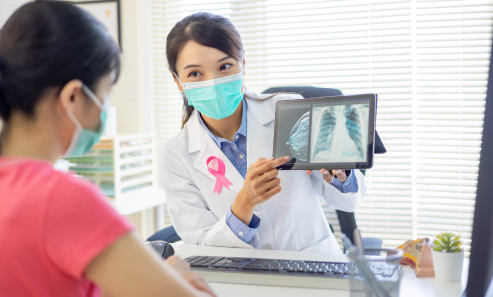




Breast cancer is a malignant tumor that originates in the cells of the breast. It occurs when abnormal breast cells grow uncontrollably, often forming a lump or mass. Though most common in women, men can also develop breast cancer.

Non-invasive, confined to ducts.

Most common, spreads beyond the ducts.

Begins in lobules and can spread.

Lacks estrogen, progesterone, and HER2 receptors.

Overexpression of HER2 protein.

Rare, aggressive, causes swelling/redness.

Affects the skin of the nipple/areola.

Cancer that has spread beyond the breast.

While exact causes are often unclear, breast cancer usually results from a combination of:



Treatment depends on the type, stage, and patient’s health. Common options include:
Lumpectomy (removal of tumor)
Mastectomy (removal of one or both breasts)


To confirm diagnosis

To check for cancer spread

Mammogram, Ultrasound, MRI, PET/CT

Lumpectomy, Mastectomy

Optional, after mastectomy